30 key statistics from 2017 to inform your marketing strategy in 2018 when targeting millennials
Millennials have become a bit of a buzz word over the past few years, but do you truly know how to reach this generation?
Millennials were born in the early 1980’s to early 2000’s. Currently, this generation has a global population of over 2 billion. Their population is large enough that they carry a lot of influence, both in sociocultural and economic ways.
Millennials have grown up in a world where digital technology and the internet are a critical part of daily life. We have found 30 of the key statistics you will need to inform your marketing strategy in 2018 when targeting millennials.
Tech use and online habits
- Millennials touch their smartphones 45 times a day
- 63% of Millennials stay updated on brands through social networks (Sproutsocial, 2016)
- Smartphones are the most popular device with millennials as 7 in 8 millennials own one (Fluentco, 2017)
- While still the top network, Facebook is far less influential with millennials than it is with older generations (Fluentco, 2017)
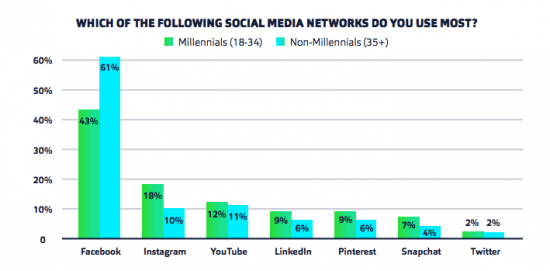
- Millennials embrace brands on social media - Five out of six millennials connect with companies on social media networks (SDL, 2016)
- Millennials spend about 27 hours consuming online media (Fortune, 2017)
- The largest gap between millennials and their older counterparts is with Snapchat. 1 in 4 millennials use it every day versus just over 1 in 10 (11%) among non-millennials (Fluentco, 2017)
- Millennials spend about 25 hours per week online (Wired, 2016)
- Smartphones are dominant devices across the entire population. 87% of both millennials and non-millennials own a smartphone (Fluentco, 2017)
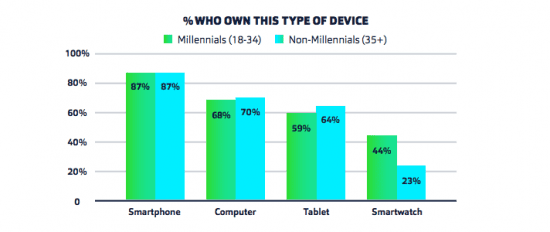
- Millennial women spend a greater portion of their online time on their smartphones than millennial men (Fluentco, 2017)
What does this mean for marketers? Millennials are the most connected generation to date. They spend more time online and are highly invested in their social networks. Therefore, many marketers have seen increased engagement using actionable incentives, such as discounts and using short-lived content. You have to meet them where they are, so ensure you have a social media strategy in place. Otherwise, you could miss a huge opportunity to increase the size of your customer base.
Shopping and spending habits
- Millennials are far less likely to buy something because it's convenient, something many companies capitalize on. Rather, they're focusing on value (Goldman Sachs, 2017)
- Over 2 in 3 (68%) of millennials said that promotional emails impacted their purchase decisions at least on a few occasions (Fluentco, 2017)
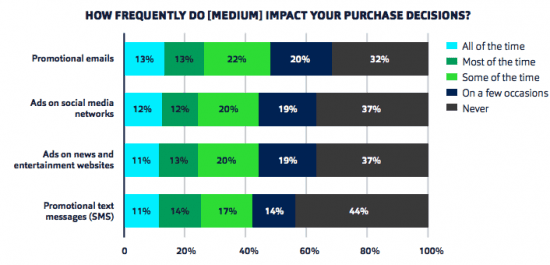
- 84% of millennials say that user-generated content has some influence on what they buy (Bazaarvoice, 2016)
- 41% of millennials have already made purchases with smartphones (MarketWatch, 2016)
- 15% of millennial smartphone owners make online purchases on their smartphones multiple times per week, plus another 15% make smartphone purchases weekly (GlobeNewswire, 2017)
- 46% of millennials rely on social media when making purchase online (Sproutsocial, 2016)
- Despite the dominance of smartphones, computers remain an important purchase device for millennials. Nearly 1 in 3 (32%) millennials use computers to make purchases at least weekly (Fluentco, 2017)
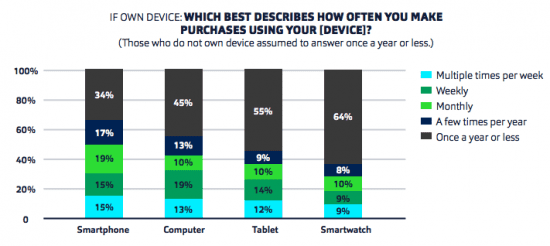
- Younger millennials make purchases less frequently with computers than older millennials (Fluentco, 2017)
- They will have the most spending power of any generation by 2018 (Ascend, 2016)
- The majority of young people have less than $1,000 in their savings accounts, and a significant number have nothing at all (CNBC, 2017)
What does this mean for marketers? Millennials spend more than any other generation and have massive influence over peers spending choices. They tend to research into exactly what they are buying and will refer to online reviews over going into store themselves. Knowing more millennials are purchasing on mobile devices, ensure you have optimized your mobile strategy to make this part as convenient as possible for prospects. They have fewer savings than any other generation but are spending more than ever.
Look to influencer marketing and engage with an audience that is similar to your target audience. Millenials respect opinions and what others think, be sure to do lots of research and refine your pitch before reaching out.
Trends and Interests
- Millennials’ concern with health, combined with an increasing passion for environmental issues, is contributing to higher organic food sales. The health and wellness food market is expected to grow to approximately $1.1 trillion by 2019 (Goldman Sachs, 2016)
- Millennials own smartwatches at nearly twice the rate of the general population. 44% say they own smartwatches compared with only 23% of non-millennials (Fluentco, 2017)
- Apple products, particularly the iPhone, are disproportionately popular with millennials (Fluentco, 2017)
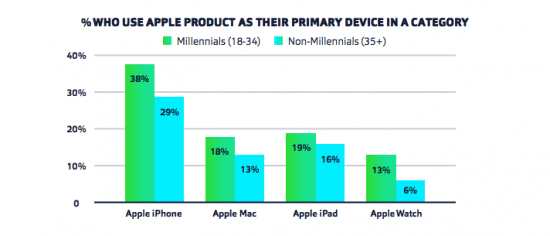
- Compared with Babyboomers, Millennials watch less TV (-43%), listen to the radio less (-60%) and read fewer newspapers and magazines (-67%). Millennials’ interest lies increasingly with online TV and online videos. They use social media as much as 100% more than Babyboomers (Expand Online, 2017)
- millennials are 7 times more likely to give their personal information to a trusted brand than to any other brand (SDL, 2016)
- Worldwide, 69% of Millennials want businesses to better facilitate customers getting involved in social issues (Shopify, 2016)
- More than half of millennials shell out money for taxis and Ubers, compared to 29% of Gen Xers and 15% of boomers (CNBC, 2017)
- 60% of millennials admit to spending more than $4 on coffee, 79% will splurge to eat at the hot restaurant in town and 69% buy clothes they don't necessarily need (CNBC, 2017)
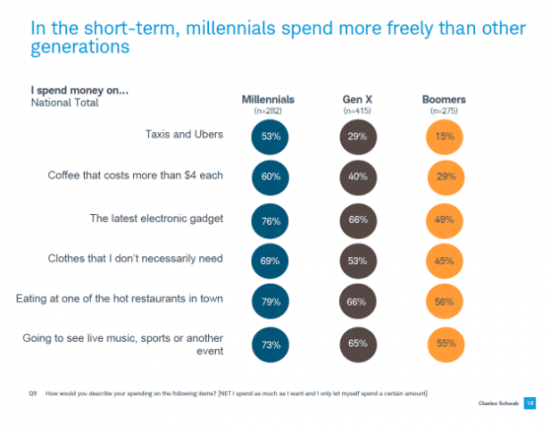
- User generated content is a great way to push Millennials further down the conversion funnel, especially since they trust it 50% more than any other type of media (Shopify, 2016)
- When Millennials consume news, 43% of them value authenticity over the content itself and there are few things more authentic than live (Shopify, 2016)
What does this mean for marketers? As millennials become a mobile-first generation, you need to ensure all marketing activity is optimised for mobile.Millenials are also quick adapters to wearable technology, especially smartwatches. The boom in wearable technology has been mainly fueled by millennials using wearable gadgets’ that monitor your heart rate or track your exercise. If you have been unsure of the transition to wearables brand should be doing something with wearables maybe start thinking about whether or not you have the tools, tactics, and support in places to be successful in this industry.
Showcasing social responsibility is important to millennials. This provides a chance for your business to make the world a better place but to also create a new way for Millennials to join in with social change. Try to introduce a cause or charity into your campaign that millennials can engage with.
Are you looking to reach out to millennials? Or have you tried to but been unsuccessful?Let us know what you think and connect with us on Twitter, Facebook, Instagram or LinkedIn.













